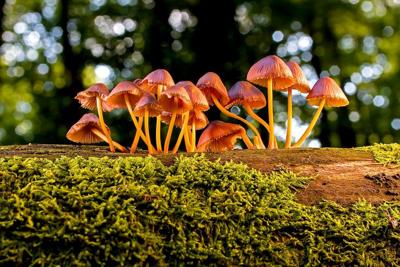Roots of Renewal: How Mushrooms are Revolutionizing Environmental Conservation
Mushrooms are indeed revolutionizing environmental conservation through various innovative practices and applications. Here are some ways in which mushrooms are contributing to environmental renewal and sustainability:
1. Bioremediation: Mushrooms have remarkable abilities to break down and detoxify various environmental pollutants, including petroleum hydrocarbons, heavy metals, pesticides, and industrial contaminants. This process, known as bioremediation, harnesses the enzymatic activities of fungi to degrade or sequester toxic substances, effectively cleaning up contaminated soil, water, and air.
2. Mycoremediation: Mycoremediation is a specialized form of bioremediation that utilizes fungi, particularly mushrooms, to remediate polluted environments. Certain mushroom species, such as oyster mushrooms (Pleurotus spp.), turkey tail mushrooms (Trametes versicolor), and shiitake mushrooms (Lentinula edodes), have demonstrated efficacy in degrading a wide range of contaminants. Mycoremediation offers a cost-effective, sustainable, and non-invasive approach to environmental cleanup, with applications in brownfield restoration, oil spill remediation, and wastewater treatment.
3. Soil Regeneration: Mushrooms play a crucial role in soil regeneration and ecosystem restoration. Through their mycelial networks, mushrooms help break down organic matter, recycle nutrients, and improve soil structure and fertility. Mycorrhizal fungi form symbiotic relationships with plant roots, enhancing nutrient uptake, water retention, and plant resilience. By restoring degraded soils and promoting plant growth, mushrooms contribute to biodiversity conservation and ecosystem resilience.
4. Carbon Sequestration: Mushrooms and their mycelial networks can sequester carbon dioxide from the atmosphere and store it in the soil as stable organic matter. This process, known as carbon capture and sequestration (CCS), helps mitigate climate change by reducing greenhouse gas emissions and enhancing soil carbon storage. Mycelium acts as a natural carbon sponge, capturing atmospheric carbon and incorporating it into the soil matrix, where it remains locked away for extended periods.
5. Green Building Materials: Mushrooms are being explored as sustainable alternatives to conventional building materials. Mycelium-based materials, such as mycelium bricks, boards, and insulation panels, offer lightweight, durable, and biodegradable alternatives to traditional construction materials. These biomaterials are grown using agricultural waste substrates and fungal mycelium, providing a renewable and low-impact solution for sustainable architecture and green building practices.
6. Biofiltration and Water Purification: Mushrooms can be used for biofiltration and water purification applications, effectively removing contaminants from wastewater and stormwater runoff. Fungal mycelium acts as a natural filter, trapping suspended solids, absorbing pollutants, and breaking down organic compounds. This biofiltration process helps improve water quality, protect aquatic ecosystems, and mitigate the impacts of pollution on human health and the environment.
Overall, mushrooms offer innovative solutions for addressing environmental challenges and promoting sustainable development. By harnessing the transformative power of fungi, we can foster renewal, resilience, and harmony in our ecosystems, contributing to a healthier planet for future generations.

Comments
Post a Comment